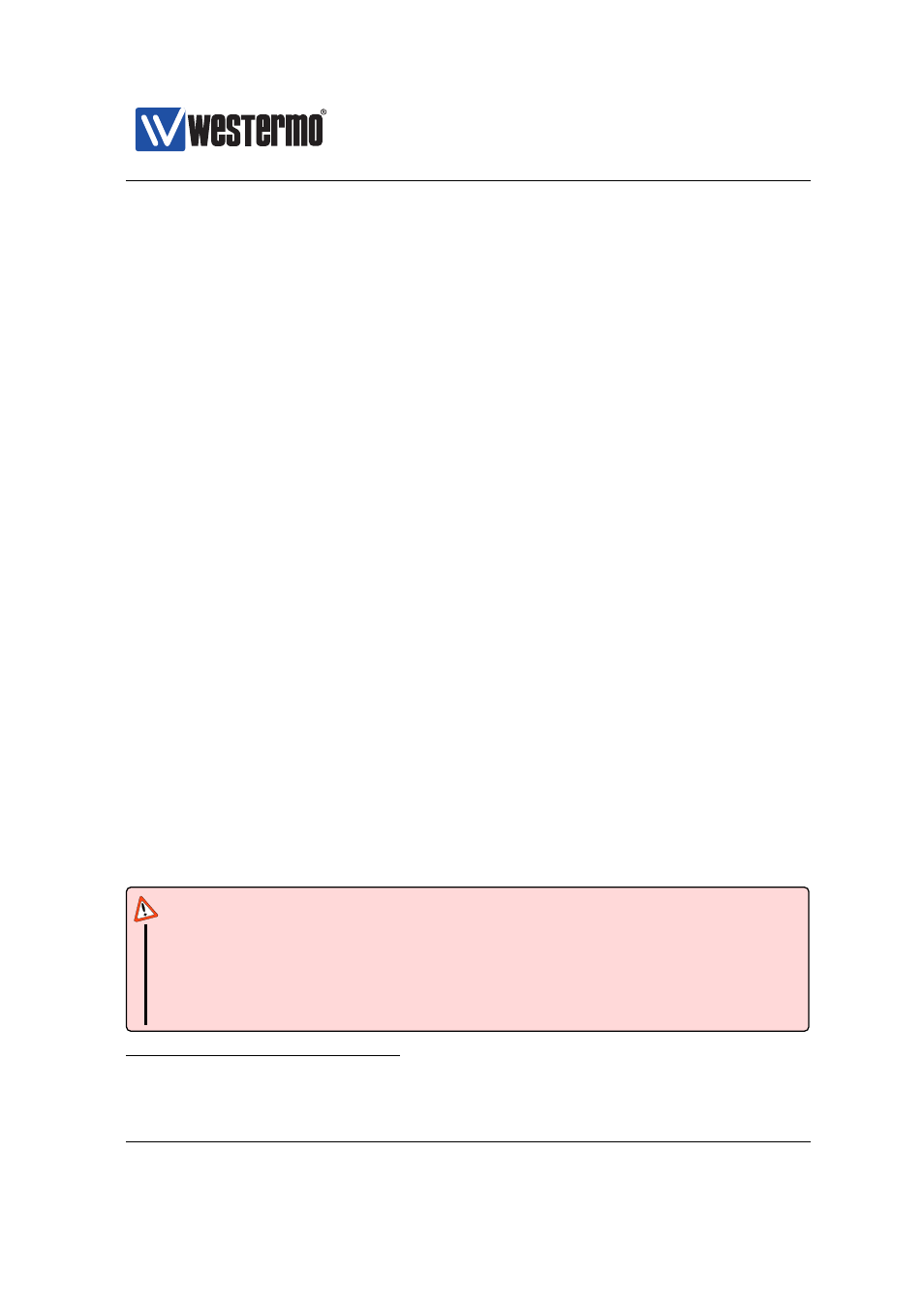Section 14.1.3 – Westermo RedFox Series User Manual
Page 308

Westermo OS Management Guide
Version 4.17.0-0
the focal point will react and put its port ”M” back to blocking state.
14.1.2
Guidelines when selecting FRNT ports
When enabling FRNT on a switch, you need to select two ports to use as FRNT
ports – FRNT port ”M” and FRNT port ”N”
. Below are some recommendations
and rules when selecting and configuring the FRNT ports.
❼ Fixed speed, full duplex: When using Ethernet ports as FRNT ports, fixed
speed (and full duplex) is recommended over auto-negotiation of speed and
duplex mode on the FRNT ports. Avoid using 10 Mbit/s speed.
❼ Avoid using copper SFPs as FRNT ports: When using Ethernet ports as FRNT
ports, choose fixed Ethernet ports or fiber SFPs. Copper SFPs may be used as
FRNT ports, but will generally imply non-negligible degradation of fail-over
performance.
❼ SHDSL ports as FRNT ports: It is possible to use SHDSL ports as FRNT ports,
but failover performance is degraded as compared to (fixed) Ethernet ports.
FRNT will not work correctly on SHDSL links with speed below 64 kbit/s.
14.1.3
VLANs used by FRNT
FRNT uses VLAN IDs 4020-4022 and 4032-4033 for its signalling. Thus, when
FRNT is enabled on a switch, these VLANs are implicitly reserved and cannot be
configured by the user.
Warning
Note on using intermediate active equipment For FRNT to operate prop-
erly, there should not be any ”non-FRNT- enabled” switches (or other ac-
tive equipment) in the FRNT ring. However, if two FRNT nodes are inter-
connected via a non-FRNT switch for testing purposes, that intermediate
switch must be configured to let VLANs 4020-4022 and 4032-4033 through.
1
In earlier WeOS versions, port ”M” and ”N” have been denoted port ”1” and ”2” respectively.
308
➞ 2015 Westermo Teleindustri AB